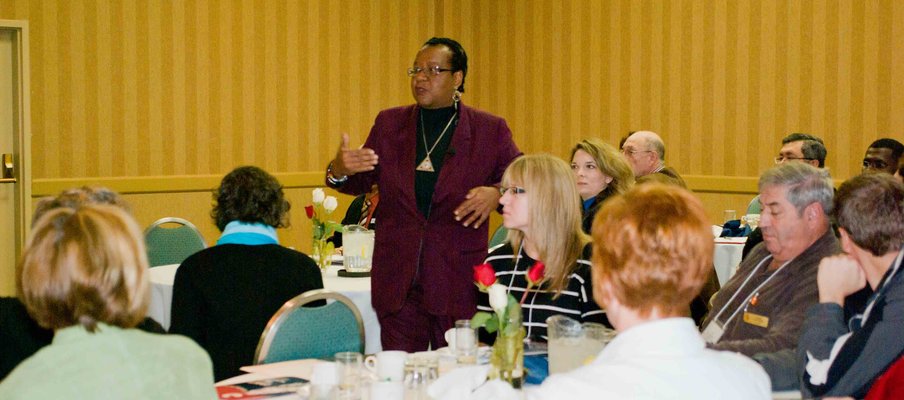
Being inclusive: Exploring the concept with Enid Lee
To be an inclusive organization requires more than just opening one’s doors a bit wider. Today’s inclusive organization must continue identifying who it serves and how it can adjust to be more open to the many cultures that call Saskatchewan home.
According to Enid Lee, anti-racism and inclusivity expert, those that include “all peoples” in their mission statements, need to ensure they are actually reaching “all peoples”. Enid Lee is well-known in the US and Canada for her work assisting teachers, students, parents, organizations and others to confront and dismantle systems and structures that promote racism.
Last October, she challenged groups attending SaskCulture’s Gathering held October 29-30, 2010 in Saskatoon to articulate what it means when they say “Saskatchewan people”. She asked whether their answer included the various linguistic, cultural, social backgrounds of those living in this province. Her discussion queried whether delegates were even aware of the current diversity of cultures found in the province. She points out how organizations must continually assess the population they serve: Who was here originally? Who has come? Who has yet to come?
There is nothing easy about increasing inclusivity, explained Lee. However, there are several considerations that should be explored.
First, she encourages organizations to look around at who they are serving and “do the numbers”. Groups need to identify who is being served by their organizations and who is making the decisions. It is important to identify whose culture is being reflected in an organization. She shared an example from a particular elementary school in Toronto, where 78% of the students were from Aboriginal, Asian and African backgrounds, yet the teachers were almost entirely Caucasian from European backgrounds. Many times teachers are members of the dominant culture that has the power to shape what happens in schools and other institutions. Realizing the potential consequences, she encourages schools to make it a priority to understand the different cultures of students and adjust their teaching practices to respect how students’ lives at home balance with what they are learning in their studies.
Secondly, an inclusive organization learns from all levels in its organization. People are often locked into different roles, she explains. Many of us are aware of how immigrants with a lot of experience and knowledge come into the country, and how to enter the workforce. They often take entry level jobs. To be more inclusive, it is important to open up avenues for advancement and communication.
She also reminds organizations to strive for cultural integrity. “Let people speak for themselves,” she explains. “It is important to make sure people’s culture doesn’t get distorted, maligned or misinterpreted.” Part of the learning process involves getting out, engaging and learning from new groups. Lee says, “You can get into anybody’s heart through validation. Ask them “What they feel is successful right now? What is the organization doing that helps? What would you like to improve on? How might we do it together? How might we collaborate?”
She uses the analogy of the dining room table. She wondered how many delegates had organizations that were like a dining room table that has been set when the organization formed and there is no place for newcomers to sit. A table must be open to new ideas, she explains and asks, “Is everything in the same place as where the organization’s founders put it?” This is a sign that change is needed.
She encourages organizations to ensure there are, what she refers to as, “ceremonies of repetition” around building inclusivity. All work done to build inclusivity needs to be reviewed and repeated on a regular basis. “We are never done with inclusivity,” she explains. “This work is never complete, it just gets more interesting.”

